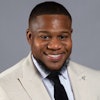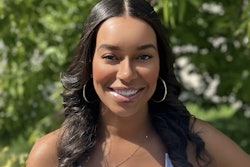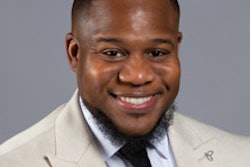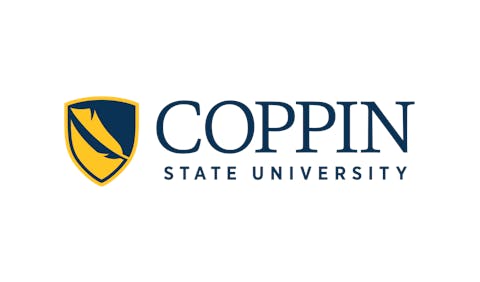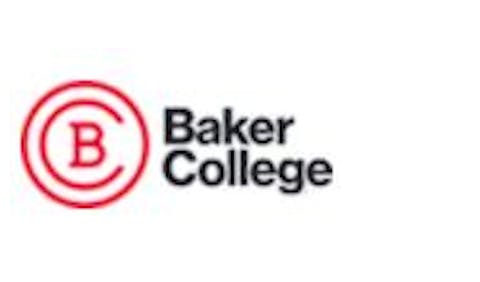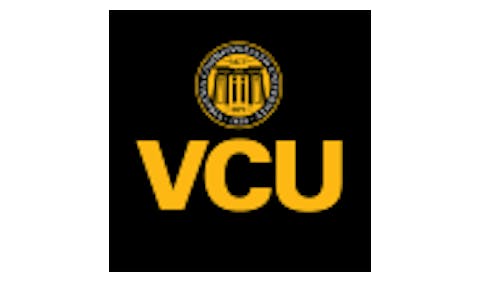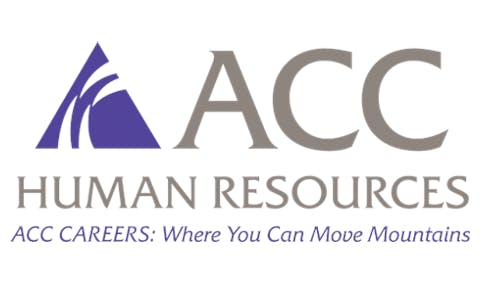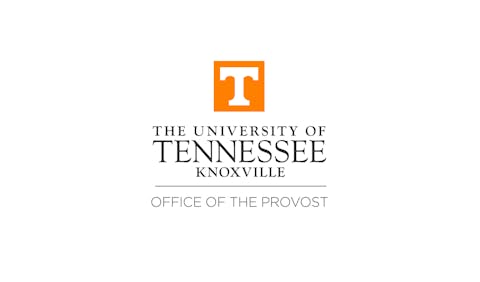Before University of South Dakota senior Anna Kimbell started college, she didn’t plan on studying abroad. But during her freshman year at a National Student Speech Language Hearing Association meeting on campus, the club’s adviser brought in a flyer for a faculty-led program in Guatemala — the country she was adopted from — and her plan changed.
Kimbell, a communications sciences and disorders major, said that mentally, she wasn’t ready to take the trip her first year. But at the beginning of this year, she traveled there with her parents and brother, who is also from Guatemala, and realized after that, with a support system in place, she was ready to return with her school’s program during spring break last April.
“It was just so important to me to come back,” Kimbell said.
For Kimbell, the way the trip and its purpose were marketed and advertised were important to her, she said.
At the “University of South Dakota, we don’t have a lot of people of color here. But at the same time, just knowing that I was going back there, I just felt a lot more comfortable.”
During the 2022-2023 academic year, Hispanic and Latinx students made up only 12.2% of U.S. students who studied abroad, according to IIE Open Doors data, with white students making up 66.4% of the U.S. study abroad population.
While experts say strides are being made in efforts to make study abroad an accessible opportunity for students of color, they, along with students, say the way study abroad is marketed and advertised is both the problem and the solution.
‘Culturally relevant marketing’
Before Kimbell went abroad to Santiago Atitlán, Guatemala, where she practiced speech pathology and play-based therapy for children with communication disorders, there were training sessions that included conversations about safety. Some of the travel advisors warned participants about safety risks and pickpocketing, Kimbell said. While she recognizes danger might exist in some parts of the country, she said, “I didn’t necessarily love the advertisement there.”
“From our trip, I made it a point just knowing that I’d gone there before, letting my cohorts know it’s a different place. Like any other place, there’s going to be some dangerous parts, but I would not consider the area that we were at dangerous in any way, shape or form,” she said.
Dr. Devin Grammon, assistant professor of Spanish sociolinguistics at the University of Oregon, spent time studying the Indigenous language of Quechua in Cusco, Peru. In the context of study abroad programs in Peru, Grammon said much of the marketing plays up a scene of local tourism — “so Incan patrimony, kind of the exotic-lost-in-time-Indigenous picture that is sold to people in any kind of Machu Picchu excursion.”
The emphasis on connecting with an Indigenous past might appeal to students who identify as Latino or Latina that grew up in the U.S. who want to reconnect with their heritage and learn about their roots, Grammon said. But a heavy emphasis on the “glorious past” of Quechua and Cusco can take away from the importance of the community’s present.
“What that does is it, in part, it presents that indigenous culture and language as a kind of museum relic, or as something that’s not really in the present, here and now and alive, and people may not feel so offended by that,” Grammon explained. “They’re excited that people are coming to study Quechua and coming to experience this place that they love, but it can inadvertently be harmful, because it’s placing that in the past, and it’s not emphasizing the here and now.”
The lack of representation in study abroad programs and its marketing exists for Black students, too. During the 2023-2023 academic year, Black students only made up 5.9% of U.S. students who studied abroad, which is down from its highest peak at 6.4%, during the 2018-2019 academic year.
Dr. Donnetrice Allison, professor and chair of Africana studies at Stockton University in New Jersey, started a study abroad program 11 years ago in West Africa that takes place during winter break. When Allison’s program began, she said she had to send its poster back to the graphics department after they’d put a photo of an elephant as part of its advertisement.
“The whole safari thing, that’s not all of Africa, that’s not everywhere, and it’s not where we’re going. That’s not a thing that we do. It should have people on the poster, so they had to change it,” Allison said. “That’s important. It’s just important for those of us who are involved and know better, to let other people know that’s not how you market a trip like this.”
In a study published in 2022 titled “Black Student Experiences with Study Abroad Marketing and Recruitment” by Dr. Kimberly Boulden, she noted that there is little representation of people of color when it comes to higher education marketing materials, but when there is, it can underpin white supremacy.
In some study abroad marketing, “there’s this ‘find yourself abroad,’ and lots of imagery of sort of the tourist landmarks and students exploring, and there’s this very neocolonial undercurrent to all of it that, in my research, I found Black students were picking up on and were very turned off by,” Boulden said.
When Dr. Ashleigh Brown-Grier founded the nonprofit International HBCU Xchange, Inc. in 2021, which works toward expanding HBCU student participation in international exchange programs, one of the organization’s first goals was making “culturally relevant marketing,” Brown-Grier said.
“We also engaged a lot of alumni from the various programs — Fulbright, Boren, Gilman, Critical Language [Scholarship] — and we made sure their faces were on the flyers, because a lot of the students said when they looked at the marketing, they didn’t see anyone who looked like them,” said Brown-Grier, who is also a two-time Fulbright recipient to Malaysia and South Africa.
Global scholar and researcher Dr. Stephanie Tilley, who is moving to South Africa this year to pursue a postdoctoral fellowship on the HBCU internationalization study abroad, echoed a similar sentiment. She said when it comes to marketing, “representation matters — it’s the gateway to curiosity.”
“It’s not just important to make sure there’s representation of the student, but what else is being communicated in that photo? Making sure they’re engaged in that photo, making sure that there’s genuine joy and connection,” Tilley explained. “There’s depth in marketing.”
When speaking with Black students for her study and research, Boulden said they noted how the experience portrayed in marketing matters. Students told her that they loved when locals in the host region “were shown in positions of authority as the experts,” compared to typical posed-group photos in front of landmarks.
“Another thing I noticed was that when trips went to Africa, some photos were of safaris or savannas,” Boulden said. “And especially the students that were first generation immigrants, or immigrants themselves and identified as Black, would be upset, because Africa is full of cities and full of vibrant businesses, and so to market your trips to Africa with photos of lions and the savanna, they did not feel was representative of their own experience as the children of immigrants or immigrants themselves.”
Solutions
Both experts and students say creating more representation in study abroad marketing and offices, as well as offering more host regions outside of Europe, are part of the solution for the opportunity to be more accessible to students of color.
“At Georgetown [University], when I was a fellowship advisor, I was the only Black person in the office,” Brown-Grier said. “And it was interesting that several other Black students who applied, they were like, ‘You know, I wanted to apply last year, but I didn’t think that they would actually help me through this process.’
And so not only was I a representation, but I was also someone who participated in that program who could say, ‘Hey, I did this program. I was a minority in this program. I’m not going to sugarcoat the challenges and the pluses, but the pluses definitely way outweigh that, because I wouldn’t be here encouraging you to apply. So all of that makes a difference.”
Another great marketing tool is students themselves, Allison said. Though the program she leads to West Africa isn’t limited to students of color, she said the participants are predominantly students of color, and having past students relay their experiences to prospective participants is helpful.
“The students are the best marketing tool, because they can talk to other students about the trip, ‘Oh, I went, and this is what it meant to me,’” Allison explained. “And again, it’s predominantly Black students who are telling other students about this trip. So now they see, ‘Oh, it’s possible.’”
Students now have been bombarded with visuals since they got a phone, making them “savvy” enough to discern “what’s performative and what’s authentic,” said Claudio Castaneda, manager of partnerships at Diversity Abroad Global Access Network.
“If it’s the same four students that are highlighted in all the materials, I, as a student, would start to wonder, are those the only four students who look like me that ever go on these programs? Also, that’s the same photo from like, four years ago,” said Castaneda, who is also an adjunct professor of art and art history at Sacramento City College.
Kobi Iheoma, who graduated in 2024 from Davidson College in North Carolina, said hearing from Black students’ in Davidson’s Black Student Coalition who previously studied abroad influenced her decision to study in Madrid, which “was pretty impactful for me, because obviously a white person’s experience abroad, especially depending on the country, is going to be a lot different than a Black person’s.”
“I feel like that was more salient to me than the study abroad office’s programming. And that’s not to say that the programming that the study abroad office did wasn’t helpful or useful, because it was,” explained Iheoma, who is returning to Spain with Fulbright for the upcoming academic year. “But I think what stood out to me the most was actually hearing about the experiences from people who have similar ethnic and racial backgrounds as me.”
Expanding program options
Caleb Datto, a senior studying political science and Spanish at Saint Joseph’s University in Philadelphia, studied abroad during summer 2024 in Buenos Aires, Argentina, after he was awarded a scholarship to study abroad in Latin America through his Latin American studies minor. But in order to study there, he had to find a program himself and pitch it to the university’s Center for International Programs since the school doesn’t offer many programs in Latin America, which was a hurdle, Datto said.
During the 2022-2023 academic year, 64.4% of study abroad host regions were in Europe, with only 3.3% in Sub-Saharan Africa, 10.7% in Latin America and the Caribbean, 9.4% in Asia, 3.3% in Sub-Saharan Africa, 3.2% in Oceania, and 2.5% in the Middle East and North Africa.
“If St Joe’s, for example, had more programs that they were directly linked with in more countries, that would have made things a lot easier with the amount of time I spent researching,” said Datto, adding that to he had to get his courses and their syllabi approved by his home university.
“It’s a lot, and it does deter you,” he said.
With the majority of study abroad programs being in Europe, Tilley said, “It is such a powerful place, but we need to tell the whole story.”
“Yes, when you think of Europe, you think, oh, traditional Europe, it may be white, but Europe is so diverse. And there’s Blackness in Europe. There is multiculturalism in Europe. And so I’m not saying remove Europe at all, but make sure the whole story is shown,” said Tilley, who attended Black Europe Summer School in summer 2022 where she learned about Black communities around the continent.
Boulden said in her research, “the programs that students really perked up on were things that might interest them, culturally or in terms of their studies” like a James Baldwin writing program abroad, or a trip that examined the Black experience in Paris and how the Black community contributed to World War efforts in the city, she said.
Before Kimbell went to Guatemala, she said she told her advisor she wasn’t yet sure if she wanted to pursue audiology or speech language pathology. Kimbell said her advisor told her the trip, which focused on speech language pathology in children, would help her decide — “And it did,” Kimbell said.
“It gave me a lot of clarity on what I wanted to do with my life, so that definitely made it a really just important trip in my life, and it definitely impacted me for the better,” she said.
Ultimately, Kimbell said her time abroad was a “life-changing trip” considering her own biological family’s background in the country.
“I felt really safe there, but also that experience has never happened to me, where I look to my left and to my right, in front of me and behind me, and there’s people who look like me, like, that’s never happened before,” Kimbell said.


